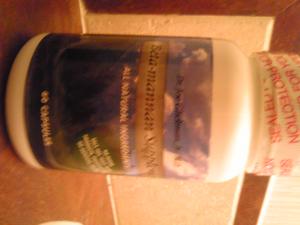Hexachlorocylohexane consists of eight isomers. The gamma isomer, or lindane as it is commonly known, is used as a insecticide. Technical-grade hexachlorocyclohexane was also used as an insecticide, however it “has not been produced or used in the United States in over twenty years”(ATSDR Toxicological Profile 2011). This type of hexachlorocyclohexane contains about 60-70% alpha isomer, 5-12% beta isomer, 10-15% gamma isomer, 6-10% delta isomer and 3-4% epsilon isomer (ATSDR Toxicological Profile 2011). The chemical formula for hexachlorocyclohexane is C6H6Cl6.
Lindane, or the gamma isomer, is directly absorbed through the exoskeleton of the target pest and through their eggs. It works in the nervous system and “interferes with the gamma-aminobutyric acid (GABA) receptor-chloride channel complex at the picrotoxin binding site” (ATSDR Toxicological Profile 2011). The protooncogene c-fos is associated with seizure activity and is induced by elevated intracellular calcium levels. Lindane activates calcium channels which increases calcium concentration which induces the protooncogene c-fos and causes seizures and epileptic events (ATSDR Toxicological Profile 2011) .
Lindane was first produced in 1950 for commercial use in the United States. It was used as a “spray for foliage, to treat soil and seed grains, and in baits for rodent pests…. Besides it agricultural uses, lindane was used in forestry for wood and timber protection and as a household insecticide” (Gandhi 2001). It was also used in veterinary products to control mites, lice and other pests. In the past, lindane was applied by aerial spraying. However, in 1985, lindane was classified as a restricted use pesticide by the EPA. This means that it can only be applied by those who are licensed and certified and these people are required to use protective equipment (Gandhi 2001). Today, lindane is used as a seed treatment for barley, corn, oats, rye, sorghum and wheat (ATSDR Toxicological Profile 2011). It is also used as a medication in the form of lotion or shampoo for the treatment of scabies and lice in humans. However, the pharmaceutical use of lindane was banned in the state of California in 2002 (IPEN 2006). Lindane is no longer produced in the United State. However, it is still imported and formulated into products for use in the United States.
Hexachlorocyclohexane has a long lifetime in the environment. We see this in the fact that “although technical-grade hexachlorocyclohexane has essentially been banned in the United States for many years, [alpha, beta and delta isomers] continute to be dected in environmental media” (ATSDR Toxicological Profile 2011). It has been found in the air, surface and groundwater, sediment, soil, aquatic organisms, wildlife, food and humans. When the lindane is applied to the crops and the soil, it can get into the atmosphere by wind erosion of the surface soil or by volatilization from the soil or plant foliage. The half-life of hexachlorocyclohexane in the atmosphere is anywhere from 84 to 115 days. It is degraded when it it reacts with hydroxyl radicals which means that in areas with low hydroxyl radical concentration, the half-life is much longer. It is also removed from the air by wet or dry deposition. When this happens, water and soil in areas that haven’t been contaminated can become contaminated. Hexachlorocyclohexane can also leach into groundwater or get into bodies of water through runoff. Another way that lindane gets into the water systems is when it is applied as a shampoo or lotion and washed off in the shower, it goes with the sewage to a wastewater treatment facility. These facilities are often not equipped to remove the lindane from the water so the lindane gets passed on to rivers, lakes or the ocean. The half-life of hexachlorocyclohexane in a river ranges from 3 to thirty days, in a lake ranges from 30 to 300 days and in groundwater is over 300 days. In the soil and water, biodegradation is the main way it decomposes, although hydrolysis and photolysis also occur (ATSDR Toxicological Profile 2011).
Lindane was classified as a restricted use pesticide “by the EPA due to concerns over its potential to cause cancer and birth defects in animals” (Gandhi 2001). It has been listed by the EPA as persistent, bioaccumulative and toxic. Lindane is the most toxic with respect to acute exposure followed by the alpha, delta and beta isomers and with respect to chronic exposer, the beta isomer is the most toxic followed by the alpha isomer, lindane and then the delta isomer (ATSDR Toxicological Profile 2011). Exposure to lindane comes most commonly from eating contaminated food or by breathing contaminated air for those who work with and around lindane. It bioaccumulates as it moves up the food chain (soil to worms to birds to mammals…). This means that humans get a hardy dose of it and tend to have higher levels as they grow older. Some effects of inhaling contaminated air include blood disorders, dizziness, headaches and changes in the levels of sex hormones. Eating large amounts of lindane can cause seizures and even death. Studies on animals have shown that lindane and the alpha isomer can cause convulsions, the beta isomer can cause comas, lindane reduces the ability to fight infection, the beta isomer can injure ovaries and testes and all isomers can have negative effects on the kidney and liver (ATSDR Toxicological Profile 2011). Effects of Lindane poisoning to animals include “increased respiratory rate and restlessness, accompanied by increased frequency of urination, intermittent muscular spasms of the whole body, salivation, grinding of teeth and consequent bleeding from the mouth, backward movement with loss of balance and somersaulting, retraction of the head, convulsions, gasping and biting, collapse and death, usually within a day” (Stringer and Johnston 2001). Chronic effects may also include shortened lifespan, reproductive problems, lowered fertility, and changes in appearance or behavior (Stringer and Johnston 2001).
Another chronic effects of exposure is cancer. Liver, lung, endocrine gland and certain other types of cancer have been seen in animals (Stinger and Johnston 2001). This has caused the scientific community to look at the carcinogenic effects that hexachlorocyclohexane has on humans as well. The Department of Health and Human Services has determined that all isomers may reasonably be anticipated to cause cancer in humans. The International Agency for Research on Cancer has classified [all isomers] as possibly carcinogenic to humnas. The EPA has determined that there is suggestive evidence that lindane is carcinogenic, but the evidence is not sufficient to assess its human carcinogenic potential. The EPA has additionally classified [technical-grade hexachlorocyclohexanes] and [the alpha isomer] as probable human carcinogens, [the beta isomer] as a possible a human carcinogen, and [the delta and epsilon isomers] as not classifiable as to human carcinogenicity” (ATSDR Toxicological Profile 2011). Laboratory studies have shown that “long-term administration of [alpha, beta isomers, lindane] or technical-grade hexachlorocyclohexanes produced liver cancer” (ATSDR Toxicological Profile 2011).
Lindane has also been linked with many different problems in women. A study in 1999 showed that Lindane “accumulates in the ovarian follicles, fallopian tubes and uterus of animals and after fetal exposures have been found to change immune system development” (Watterson 2003). It is a direct-acting reproductive toxicant and has been linked to increased rates of ovarian cancer in rats (Watterson 2003). A program called Dispatches in the United Kingdom linked lindane to clusters of breast cancer in South Lincolnshire, which was 40% higher than the national average. Lindane had been used as an insecticide that was delivered to crops by aerial spraying. The women portrayed on the program “confirmed that there was no family history of breast cancer and that they were suffering from it at an unusually early age” (Day 2003). Although some women came into direct contact with the lindane, most were exposed to it through their food. It bioaccumulated up the food chain since the tops of root crops were fed to cattle. This caused an uproar with the women who lived in this area. They banned together to try to get lindane production and sales stopped. Finally, “in July 2000 the European Union Standing Committee on Plant Health voted for the noninclusion of lindane under Directive 91/414. This meant that lindane would be removed from agricultural and amateur gardening use throughout Europe” (Day 2003). A case study of a young couple who farmed 90 acres of land in Licolnshire also showed how lindane affects women more strongly than men. Although the man’s lindane level was 8.8 migrograms per liter and his wife’s was 1.0 migrograms per liter, “the man needed at least ten hours of sleep and a further early afternoon rest each day to be able to carry out his farm duties. He was physically weak and complained of mild flu-like symptoms lasting about three days and occurring every two to three weeks. His wife was much more disabled, with more sever symptoms that kept her in bed for at least three full days each week” (Howard 2003).
Due to these many negative effects of lindane and hexachlorocyclohexane use and the regulations that have been placed on its use, other replacements have been looked at. In the treatment of head lice, malathion has been promoted by the industry. However, malathion could be just as bad as lindane. It is an organophosphate pesticide that “acts as a pediculicide by inhibiting cholinesterase activity in vivo” (Malathion Information Sheet). Malathion is absorbed into the body when applied to the scalp and the long term effects have not been completely researched and are not known. Other alternatives include mayonnaise, vasoline and hot air to get rid of head lice, although the effectiveness of these products are questionable. According to headlice.org, the best way to get rid of head lice is by manually going through the hair and removing the lice and nits by hand. For the treatment of scabies, “tea tree oil (Melaleuca alternifolia ) is highly successful against mites in vitro, and a paste made from neem extracts (Azadirachta indica ) and tumeri c (Curcuma longa ) cured 97% of patients with scabies with no adverse reactions” (IPEN 2006). Agricultural alternatives to lindane include many non-chemical strategies such as “crop rotation where a non-host species is planted to reduce the damage of infestation and maintain low levels of pests; site selection and monitoring to determine if a crop-damaging pest is present; fallowing the area for a few years before planting to starve the pests; careful seed selection and reseeding with resistant crops; timing of seeding and planting; zero or reduced tillage regimes; increasing seeding rates; shallow seeding; good seed to soil contact; balanced fertility levels to ensure that plants are not predisposed to disease; avoidance of excessively wet seed beds; and use of more competitive crop varieties to limit losses from these pests. Other nonchemical alternatives to lindane include biological control methods that utilize predators of the target pest to reduce populations” (IPEN 2006).
WORKS CITED
Day, Jill. The Campaign Against Lindane: The Lessons of Women’s Action.” Silent Invaders: Pesticides, Livelihoods and Women’s Health . Ed. Miriam Jacobs and Barbara Dinham. London: Zed Books Ltd, 2003.
Ghandi, Renu and Suzanne Sedeker. Pesticides and Breast Cancer Risk: Lindane.” July 10, 2001. Cornell University. <http://envirocancer.cornell.edu/FactSheet/Pesticide/fs15.lindane.cfm>
Hannon, Sara, Colleen Keane and Pamela Miller. “Lindane: Pharmaceutical and Agricultural Alternatives.” April 2009. International POPs Elimination Network. <
http://www.ipen.org/ipenweb/documents/ipen%20documents/alternatives%20lindane %20report%2009.pdf>
Howard, John. Measuring Gender Differences in Response to Pesticide Exposure.” Silent Invaders: Pesticides, Livelihoods and Women’s Health . Ed. Miriam Jacobs and Barbara Dinham. London: Zed Books Ltd, 2003.
Malathion Information Sheet. <http://www.headlice.org/malathion/malathioninfo.pdf>
Stringer, Ruth and Paul Johnston. Chlorine and the Environment. Dordrecht: Kluwer Academic Publishers, 2001.
” Toxological profile for Hexachlorocyclohexane (HCH).” March 3, 2011. Agency for Toxic Substances and Disease Registry. <
http://www.atsdr.cdc.gov/ToxProfiles/TP.asp? id=754&tid;=138#top>
Watterson, Andrew and Jenny Watterson. “Implementing Pesticide Regulation: Gender Differences.” Silent Invaders: Pesticides, Livelihoods and Women’s Health . Ed. Miriam Jacobs and Barbara Dinham. London: Zed Books Ltd, 2003.



